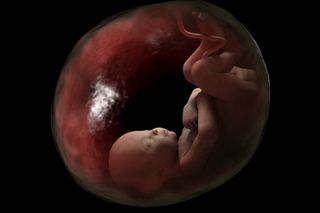- UID
- 20
- Online time
- Hours
- Posts
- Reg time
- 24-8-2017
- Last login
- 1-1-1970
|
|
━━━━━━━━━━━━━━━━━
Scientists found that a mother's relative exposure to air pollution correlates to the amount of soot found in the fetal placenta.

The fetal placenta lies on the other side of the placental barrier, a wall of tissue that separates the mother's blood from the developing baby's.(Image: © angelhell/iStock/Getty Images Plus)
▼ Black soot spewn from cars and burning fossil fuelscan find its way into the womb where a fetus is developing, according to a new study.
The researchers found that the amount of soot, also called black carbon, embedded in the fetus side of the placenta correlates to the estimated air pollution found near the expectant mother's home, they described online Sept. 17 in the journal Nature Communications.
"This is the most vulnerable period of life. All the organ systems are in development. For the protection of future generations, we have to reduce exposure," said study co-author Tim Nawrot at Hasselt University in Belgium, in an interview with The Guardian.
Even so, the researchers can't say whether those particles actually get into the fetus, they noted in the paper.
Toxic particlesfound floating in polluted air have been spotted in placentas before, and a study presented at a conference in 2018revealed that inhaled black carbon— a component of soot — can enter the placenta through the mother's bloodstream. But previous research failed to confirm that the soot could then move from the maternal placenta, made from the mother's uterine tissue, to the part of the placenta made from tissues that form the developing child and so are accessible to the fetus. The new study supplies this evidence.
The researchers gathered placental samples from (▪ ▪ ▪)
► Please, continue reading this news here: Source |
|